 We lost two fruit trees during the two years we rented our house, so it was important to me to get new ones in the ground asap. Fruit trees often take three or more years after planting to produce fruit. And as the saying goes, the best time to plant a fruit tree was ten years ago.
We lost two fruit trees during the two years we rented our house, so it was important to me to get new ones in the ground asap. Fruit trees often take three or more years after planting to produce fruit. And as the saying goes, the best time to plant a fruit tree was ten years ago.
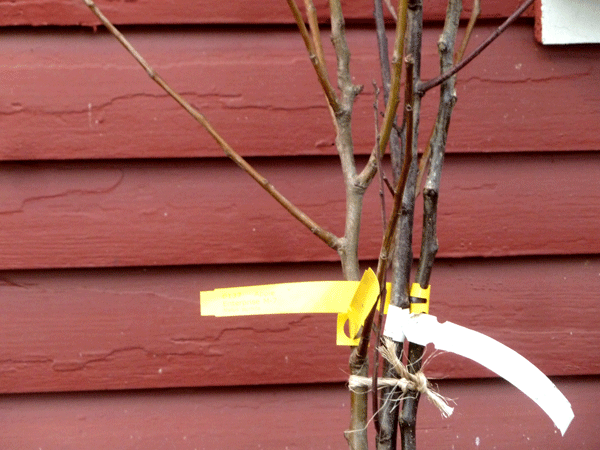 I picked up an European Pear called Rescue that promises to be vigorous, productive and well-suited for the Pacific NW. The fruit will be yellow with a reddish-orange blush on it, which should stand out nicely in the garden. This replaced the pear tree we lost and will provide cross-pollination for the our other pear tree that survived. (Florence supervised the planting)
I picked up an European Pear called Rescue that promises to be vigorous, productive and well-suited for the Pacific NW. The fruit will be yellow with a reddish-orange blush on it, which should stand out nicely in the garden. This replaced the pear tree we lost and will provide cross-pollination for the our other pear tree that survived. (Florence supervised the planting)
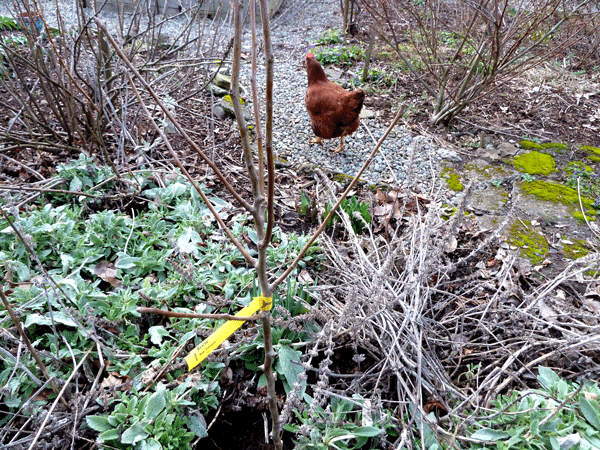 In the back corner of our homestead was a Goldenchain tree, initially planted to fix the nitrogen in our soil which would help the understory plants thrive. Unfortunately, the tree has never done well and I discovered recently that Portland lists this species as noxious! Often that is one step on the road to plants being considered invasive, so I decided to pull the tree and replace it with something more productive.
In the back corner of our homestead was a Goldenchain tree, initially planted to fix the nitrogen in our soil which would help the understory plants thrive. Unfortunately, the tree has never done well and I discovered recently that Portland lists this species as noxious! Often that is one step on the road to plants being considered invasive, so I decided to pull the tree and replace it with something more productive.
 I planted a semi-dwarf apple tree called Enterprise in its place. The semi-dwarf size will be bigger than our other trees – probably around 15-16 feet at maturity. That should “anchor” the back northeastern corner of the garden and provide more fruit without shading any competing trees. Enterprise is a disease-resistant variety, good for fresh eating or baking, and claims to be easy to grow. It looks like a stick right now, but come springtime this apple tree will take off!
I planted a semi-dwarf apple tree called Enterprise in its place. The semi-dwarf size will be bigger than our other trees – probably around 15-16 feet at maturity. That should “anchor” the back northeastern corner of the garden and provide more fruit without shading any competing trees. Enterprise is a disease-resistant variety, good for fresh eating or baking, and claims to be easy to grow. It looks like a stick right now, but come springtime this apple tree will take off!
My most exciting new fruit tree is a Mirabelle Plum – a tree I have been obsessed with since discovering it four years ago during a One Green World fruit tasting. At the time, the nursery was unsure if they would cultivate them, but they got a great response from customers and now have it available for sale. Oh my goodness – one of the best plums I have ever tried!
Mirabelle Plums are an old French type of plum and this particular variety was golf ball-sized with a tiny, cherry-sized pit. So you can pop the whole thing in your mouth! The yellow fruit had a pink blush and sweet flavor. After four years of pining for that plum, finally we have one planted in our backyard! Plums are self-fertile, so just one tree should give us some tasty fruit in a few seasons.
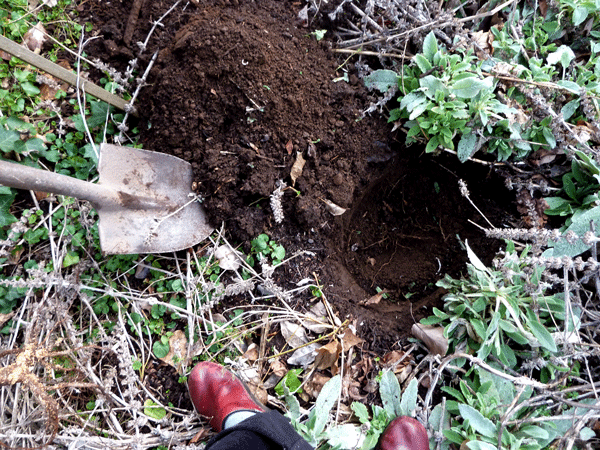 These beloved trees were very carefully planted, which is no easy task at 39 weeks pregnant… It’s so important not to skimp on the planting process. I dug hole slightly larger than the root areas, carefully placed the trees, then covered with soil right to the soil line. Burying the trees too deep or too shallow will eventually kill them, so the right height is key. Don’t supplement the soil yet either – the trees need to get used to your soil type and babying them with lush soil could discourage them from stretching out their roots.
These beloved trees were very carefully planted, which is no easy task at 39 weeks pregnant… It’s so important not to skimp on the planting process. I dug hole slightly larger than the root areas, carefully placed the trees, then covered with soil right to the soil line. Burying the trees too deep or too shallow will eventually kill them, so the right height is key. Don’t supplement the soil yet either – the trees need to get used to your soil type and babying them with lush soil could discourage them from stretching out their roots.
Gentle rains came later in the evening to soak them in. A month or two from now they will wake up from winter with blooms in their new home. It’s amazing how $60 bucks spent on trees can transform a garden and a gardener’s mood. If you are planning to add some new ones, now is the best time to plant so get growing!
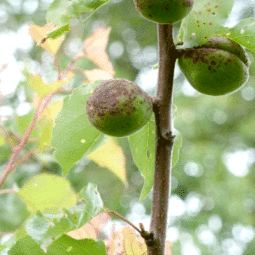
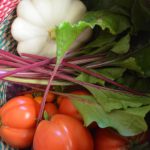
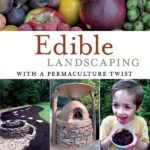
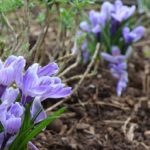
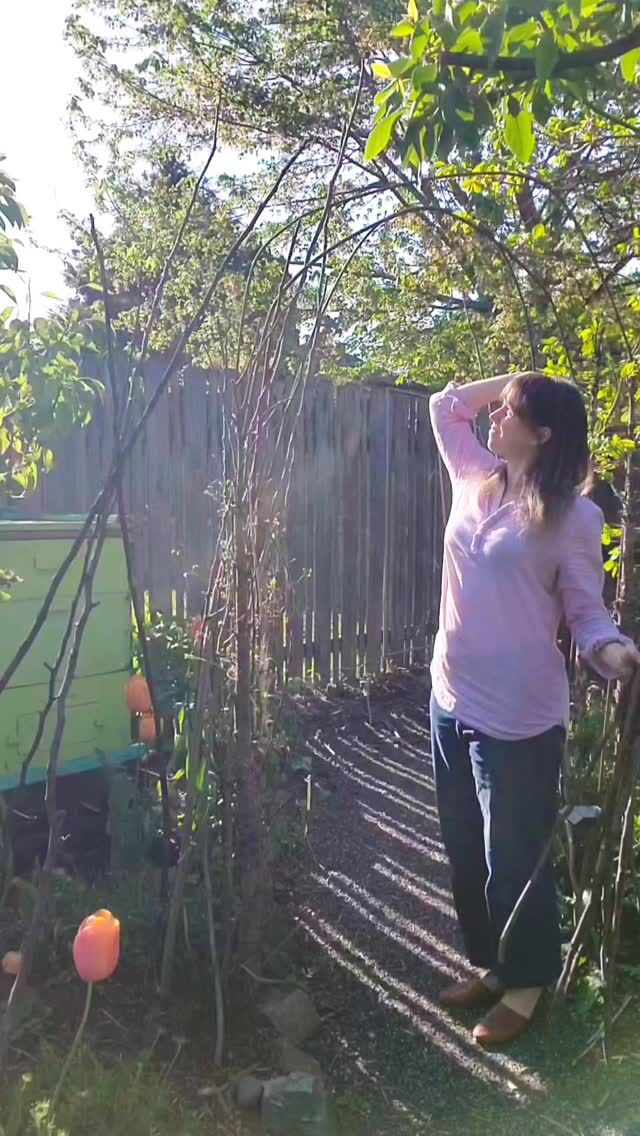
 I start with a
I start with a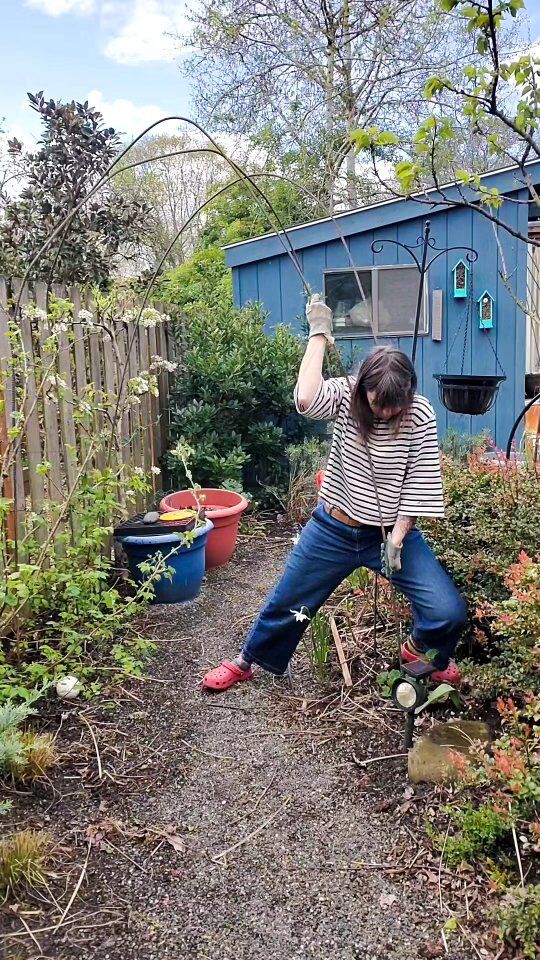
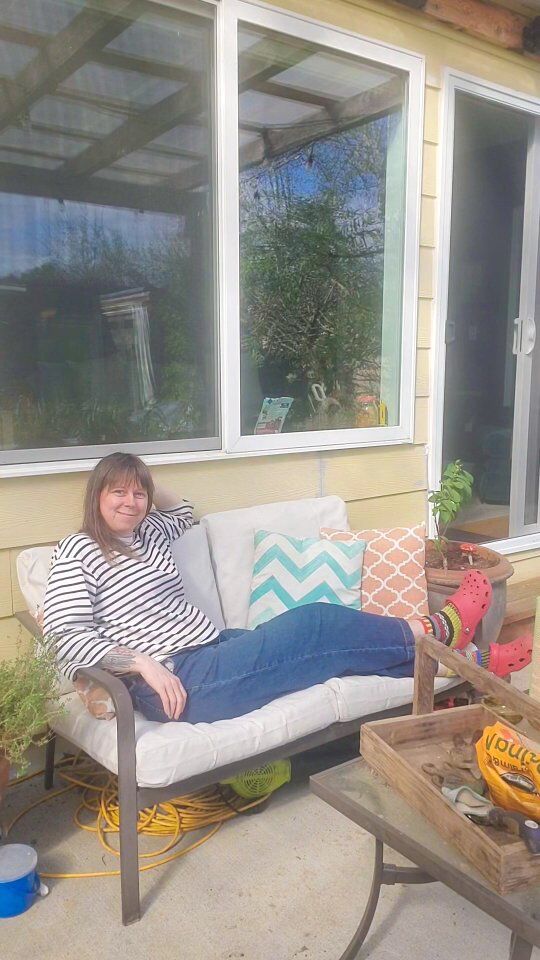
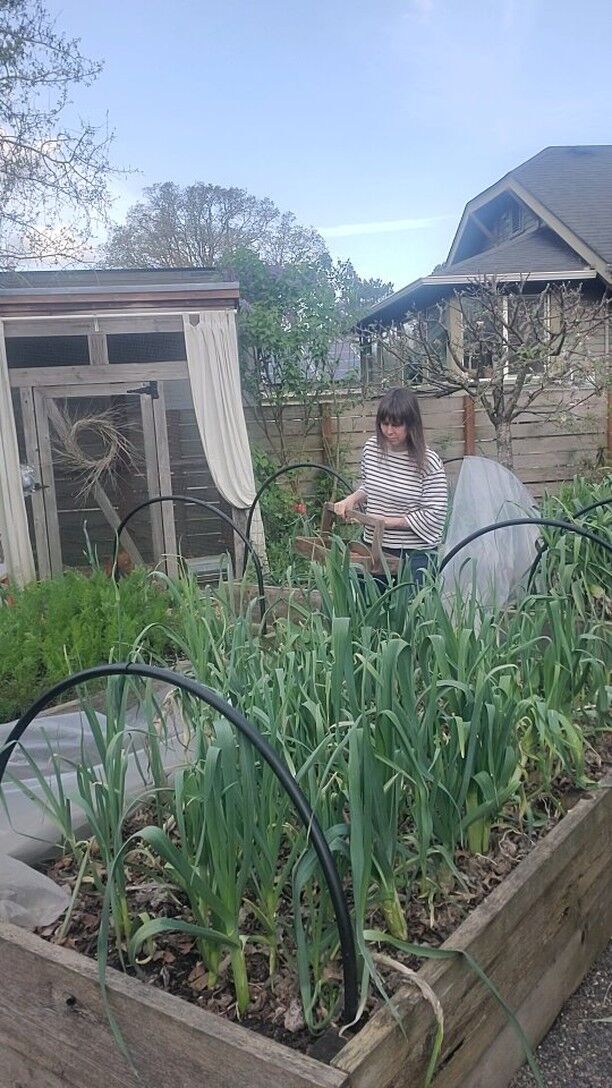
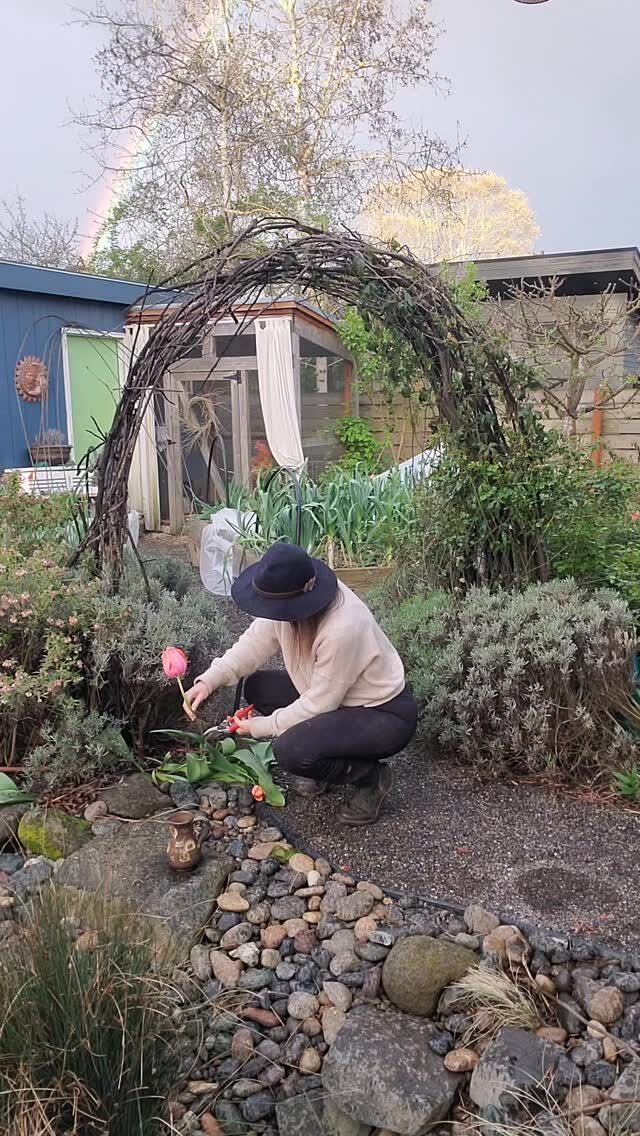
 There's a go
There's a go
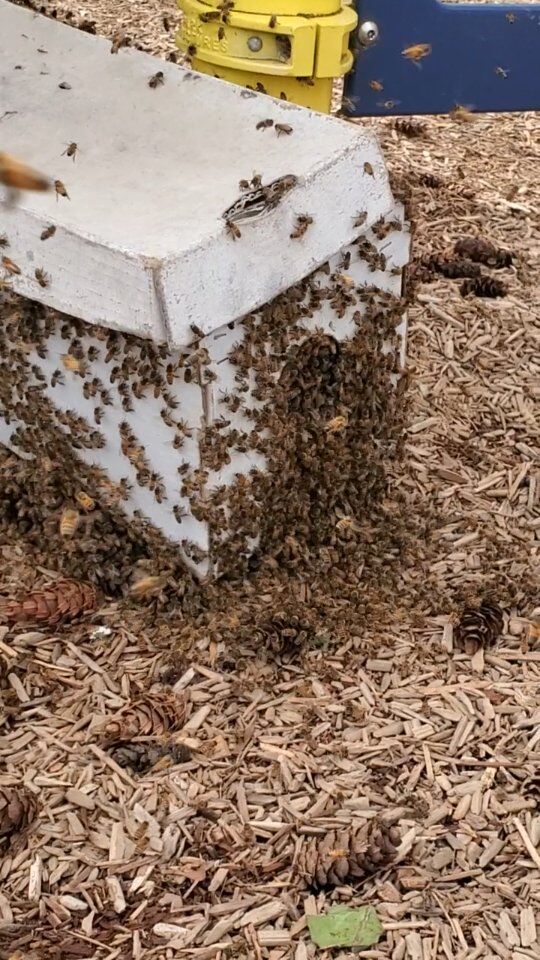
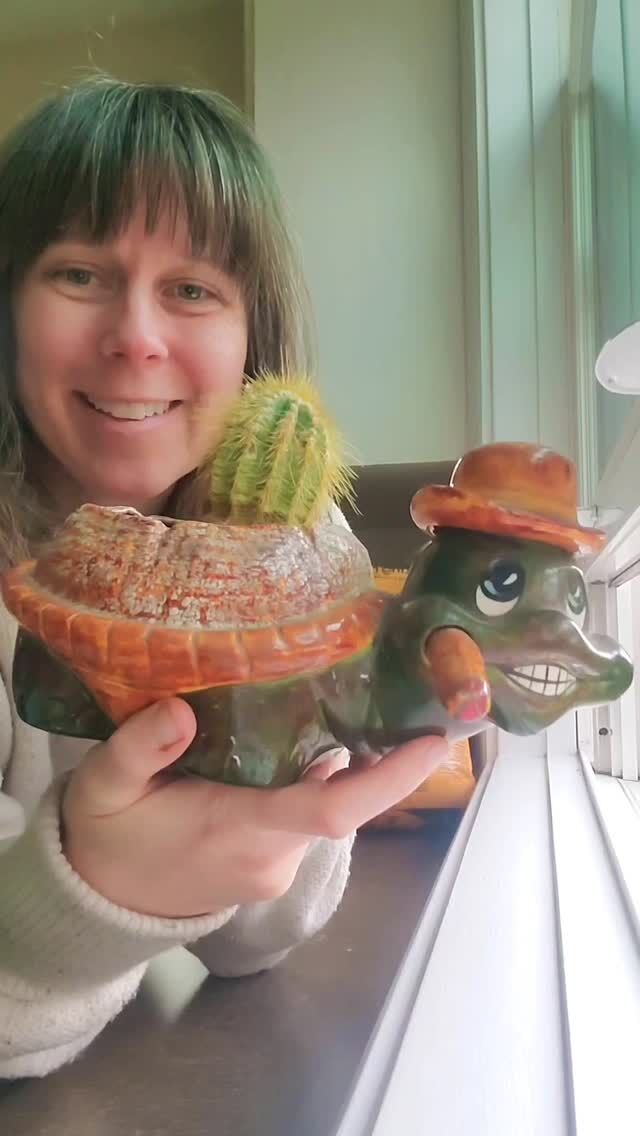
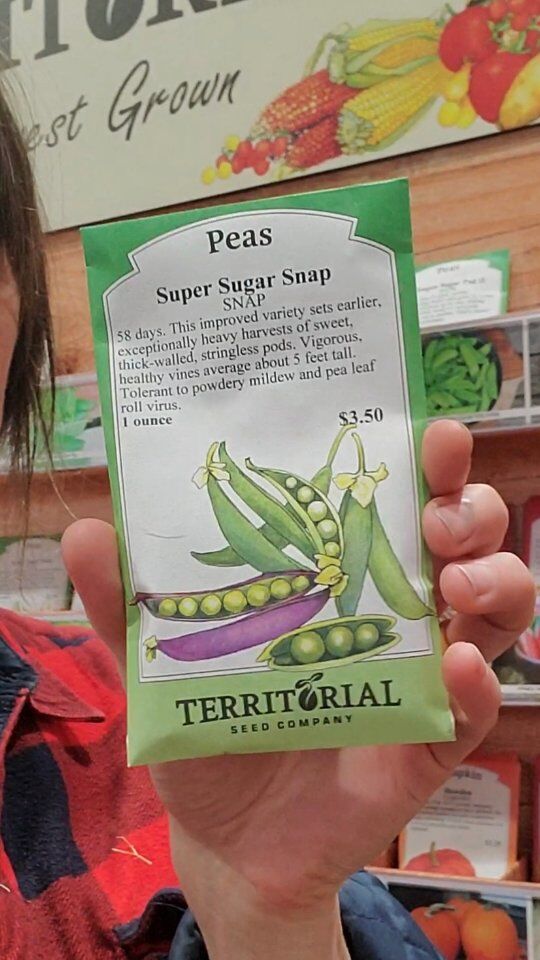
Fruit trees have really been on my mind lately. I think we are going to buy a peach tree, and some rasberry vines this year too. Thanks for the inspiration!
I know what you mean – we planted a fig and a pomegranate this year and I am so excited about them.
I live in a 10 yo subdivision in northen CO. Many of the trees have died/are dying. We just replaced the second set of dead trees in 10 yrs with lindens (we just bought the house). The only neighbor with good tree luck said to dig HUGE holes (5-6 ft across) and amend the soil like crazy. The soil is very clay. This is contrary to what you recommend. Have any insight/suggestions/reasoning for me? I’m too lazy to take a soil sample over to the university, and even if I did, what good would it do? Would I just find out trees are doomed to fail in out neighborhood? Interstingly, the nearby neighborhoods’ trees are fine. Thanks!
The trees would then do great until their roots reach the edges of that 5-6′ hole, in which case they may turn inward and just circle the good soil rather than stretch out. My advice would be to choose a hardy native to replace the ones that were lost. They should be adapted for your soil AND your climate, although they will want supplemental watering the first three years. Your local nursery could hopefully point you to some good, native, hardy options.
So itching to get out in the garden and start working! I’m wondering if you’ve heard of or what your thoughts are on Dave Wilson’s Backyard Orchard Culture. I’ve been thinking of giving it a try…
http://www.davewilson.com/br40/sales_how2.html
That link is the selling byoc link. Sorry. Here is their explanation: http://www.davewilson.com/homegrown/BOC_explained.html
Check out your local nursery for the varieties that do best in your area.